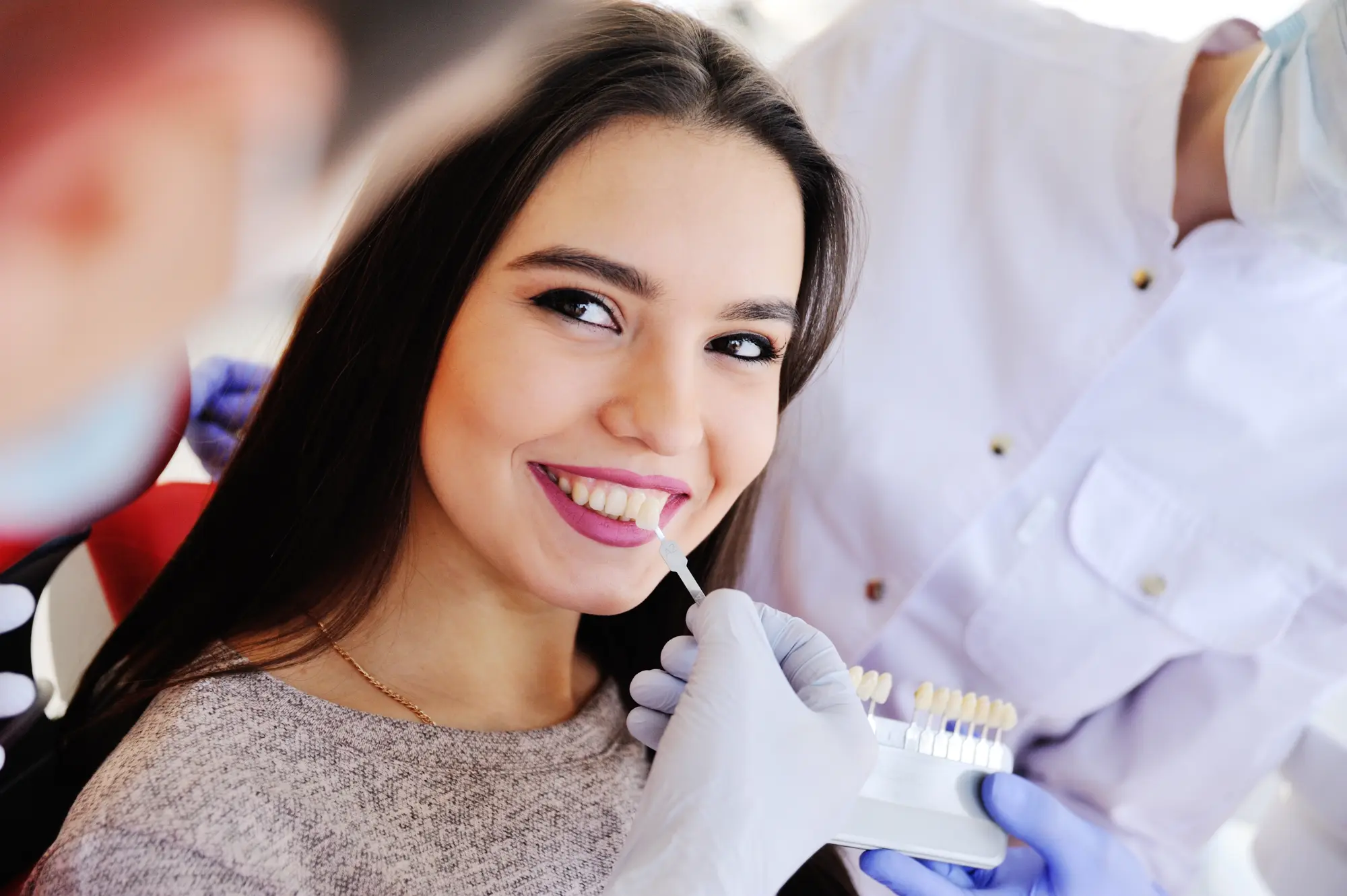
Is There an Age Limit to Invisalign? And 5 Other Invisalign FAQs
Embrace the smile of your dreams with Invisalign clear aligners.
Invisalign is among the most widely sought-after types of orthodontic treatments; however, many people have questions about how it all works. Invisalign age limits, treatment lengths, and how it affects your lifestyle are all areas patients may not be familiar with. Here are the answers to some common questions you might have about this popular treatment.
1. Is there an Invisalign age limit?
While most people associate orthodontic treatment with childhood and adolescence, it’s by no means off-limits for adults. In fact, Invisalign’s comfortable treatment method has increased the number of adults seeking orthodontic treatment.Conventional straight-line orthodontics like braces has always been an option for adults. However, the conspicuous appearance and long treatment time left many adults avoiding the treatment and simply living with crooked teeth. The convenience and discreet appearance of Invisalign offers a solution to these issues.While treatments like Invisalign are often more effective in younger patients who are still developing, there’s no Invisalign age limit. The treatment is suitable for most adult cases, and you can schedule a consultation to find out for sure.
2. How does Invisalign straighten teeth?
Invisalign is celebrated for the key differences that it has compared with traditional braces. However, the way these two treatments work isn’t all that different. Both apply steady pressure over a period of time to guide teeth into their proper positions.The difference is how they apply that pressure. Traditional braces rely on an archwire attached to brackets, which are cemented to your teeth. The archwire is periodically tightened to maintain pressure.Invisalign uses custom clear aligners that fit over your teeth. They are carefully shaped to apply continuous pressure. Over the course of treatment, you will switch aligners every two weeks or so. The series of aligners gradually change in shape to deliver the final results.
3. How long until I see results with Invisalign?
Invisalign is widely known for the shorter treatment times it can offer compared with other options. However, your individual treatment time will depend largely on your specific needs.The length of your treatment is determined by the specific type and extent of movement required for your teeth. For example, moving further and in more complex ways takes longer.The simplest cases, often to realign teeth where a retainer wasn’t used after orthodontic treatment, can take just four months. Most cases are in the range of 12 to 18 months, which is a significant improvement over traditional braces.
4. Is Invisalign more comfortable than braces?
Invisalign is absolutely more comfortable than braces. The discomfort of braces is one of the main reasons both adults and children prefer to avoid that type of treatment. With braces, you can scrape the inside of your mouth on brackets and experience painful band snaps.But with Invisalign, the smooth, clear plastic aligners don’t cause irritation or damage to your mouth, and there aren’t any sharp bits to cause cuts. You won’t even notice the steady and even pressure the aligners exert.Oral hygiene is also easier. You won’t need any special equipment to take care of your teeth during treatment. You can simply remove the Invisalign aligners when it’s time to brush your teeth, clean them, and then put them back on.
5. Can Invisalign fix overbite?
While most patients prefer Invisalign, it’s important to make sure that the treatment is right for you. There are many different types of issues that require orthodontic treatment, and not all of them will benefit from Invisalign treatment.However, overbite is one issue that can generally be treated with Invisalign. Invisalign is also suitable for treating many cases of underbite, except for particularly complex cases. Crowding and spacing are also ideal use cases for Invisalign.These various issues cover the majority of orthodontic cases. It’s worthwhile to schedule a consultation to find out whether Invisalign treatment can give you a beautiful smile and a foundation for lasting oral health.
6. How does Invisalign affect eating?
Traditional braces bring a variety of dietary restrictions. For the most part, you need to be conscious of food getting stuck behind the archwire and around brackets. Hard foods, like popcorn kernels or particularly sticky foods should be avoided.With Invisalign, you face no such restrictions. You simply remove your clear aligners when it’s time to eat. It’s recommended that you brush your teeth again before putting them back on.You can also drink water with the aligners on, as it poses no threat to your teeth. Avoid drinking anything else with them on, though, as sugary and acidic drinks can become trapped inside the aligners and contribute to tooth decay.
Find out whether Invisalign is right for you.
If you are searching for a way to achieve a beautiful smile with a comfortable treatment experience, Invisalign could be the solution you need. You can begin your journey to a smile you love by reaching out to the friendly, compassionate team at Tomasik Family Dental for Bee Cave orthodontics with Invisalign.Schedule your appointment today to find out more about your treatment options.
Related Posts

Am I a Candidate for Invisalign?
Are you dreaming of a straighter smile without the hassle of traditional metal braces? Invisalign might just be the perfect solution for you.

Veneers vs. Bonding: Which is Right for Your Smile?
Your smile is one of your most important assets, and enhancing it can boost your confidence and overall appearance.

5 Things You Can Do at Home to Prevent Tooth Decay

